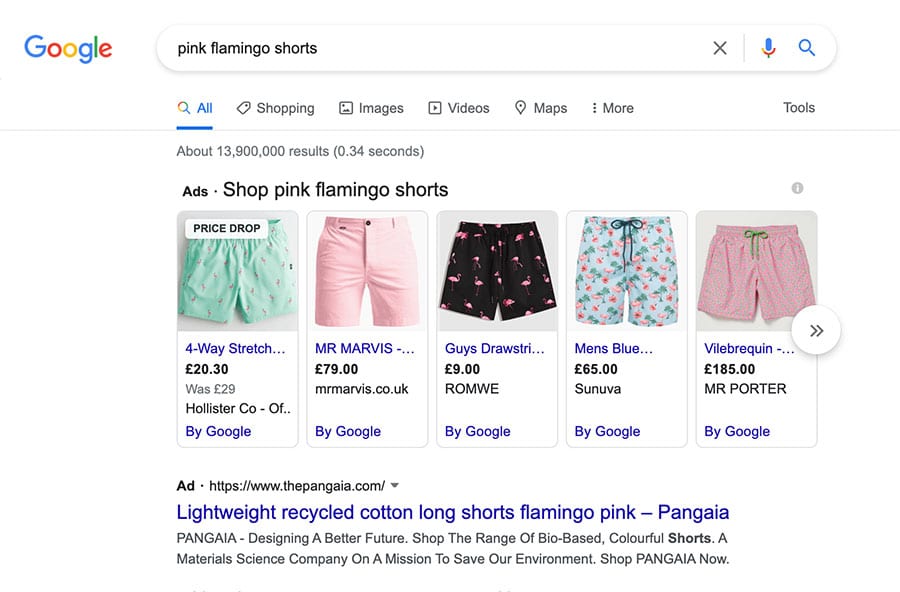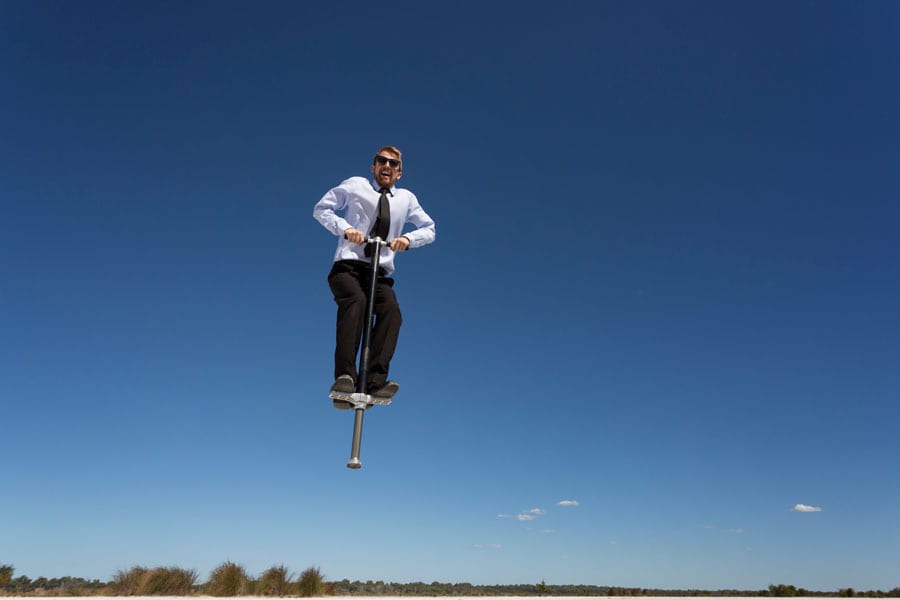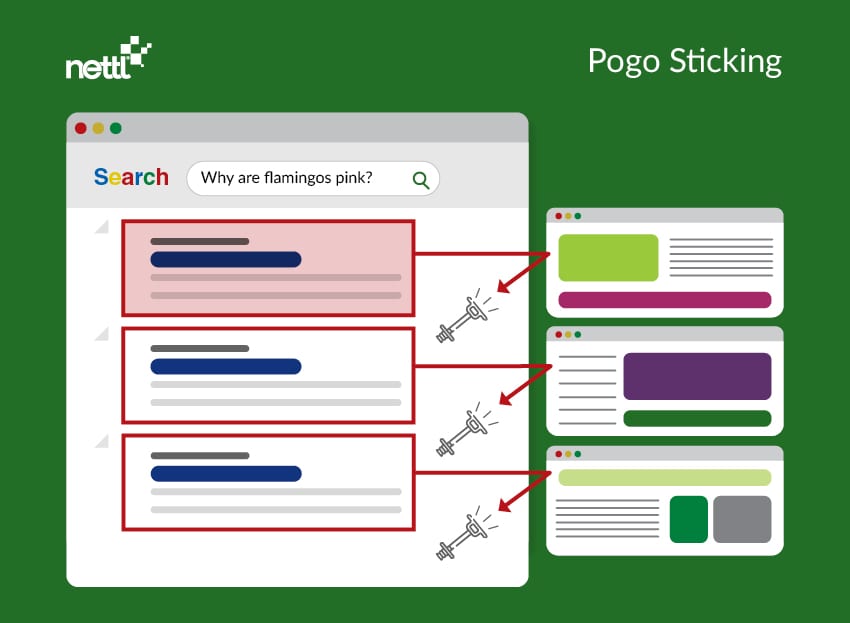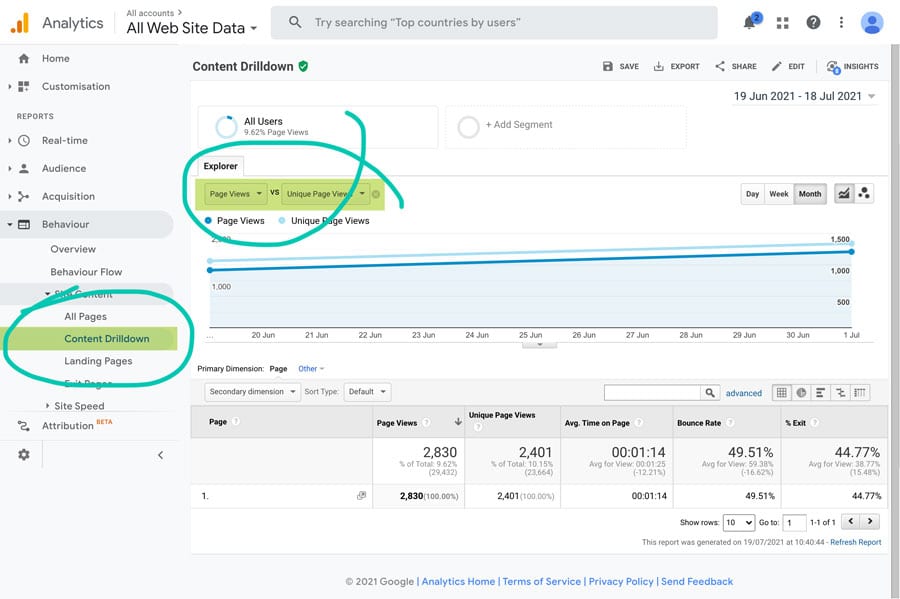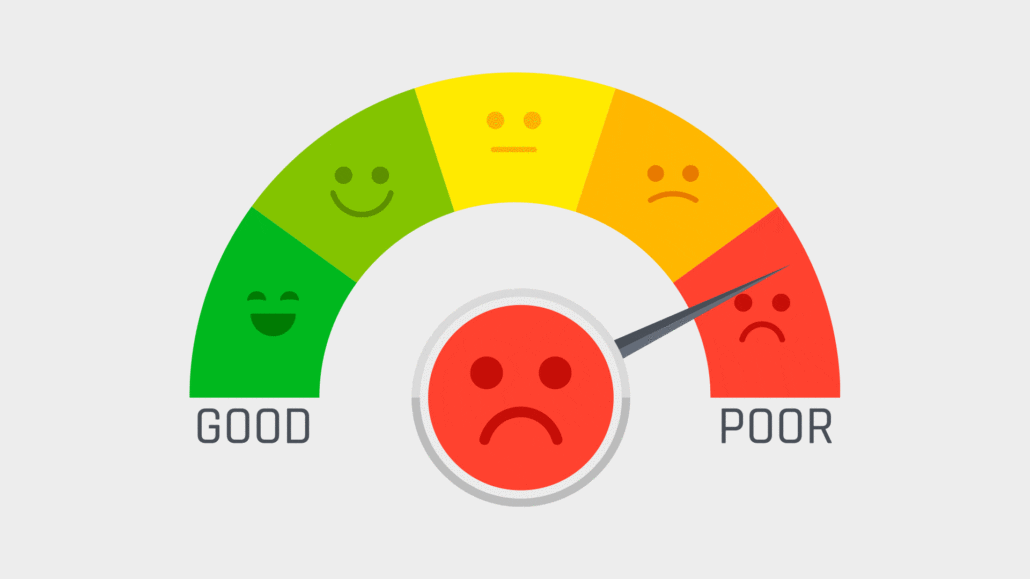Let’s assume that you’re here because you’d like to optimise your website for best results.
Optimising your website to avoid Pogo Sticking is important because it helps you serve your customers.
By aligning your website content with user intent, you increase the chances your visitors will hang around longer, build trust and loyalty, and ultimately you’ll get more conversions.
So here’s an introduction to Pogo Sticking, along with 7 business blockers you should look out for.
Let’s jump in by painting a picture in your mind…
‘That’s not quite how it looked in the brochure’
The limp burger that didn’t quite look the same as the menu.
The tired sun loungers next to a building site.
The product page that promises you pink flamingo shorts but appears more pink flannel on arrival.
How does it make you feel?
You’ve been there before.
One of the fastest routes to a destination of dissatisfaction is when the reality doesn’t quite match what was promised, right?
Or maybe not promised, but just not what you’d hoped.
So what do you do? You go Pogo Sticking.
What is Pogo Sticking?
Pogo Sticking is a type of browsing behaviour where you quickly hop from page to page searching for content that matches your needs.
However, there is another important characteristic of Pogo Sticking.
You must revisit the same results page each time, between each new page or website.
For example, you perform a search, click on a link, and where you end up isn’t giving you the right vibes.
So you jump back to the previous results, and you try again.
Less surfing the web and more paddling out through waves. Often to find there are none.
Urgh. This. Gets. Frustrating.
So, it’s like a bounce then?
Kind of. Your website ‘bounce rate‘ is calculated by what percentage of folk arrive on your website, and then leave, before clicking anything else.
So when someone lands on your site, instantly realises it’s not for them, and leaves within a nanosecond, that’s a bounce for sure. But are they Pogo Sticking?
It depends. Just like the name suggests, they’d need to be ‘hopping around’ various pages or websites. Usually via the same results page.
So, Google search > Website 1 > Back to search results > Website 2 > Search results again > Third time lucky?
Or equally, this could all happen on your own website.
From your home page, category, or services page for instance.
Electrical Category > Cable > Electrical Category > Cable Connectors > Electrical Category > Terminal Strips
Attention is not an infinite resource
A website that’s difficult to use has something called a ‘high interaction cost’.
So even if your website visitors are determined enough to see this session through, they may not be so keen to return.
Their poor experience will put them off visiting again. No return ticket.
What happens if they’ve landed on your site after clicking a link on a search engine, but your results aren’t up to scratch?
Unfortunately, they’ll be less trusting of that recommendation next time (if the search engine even decides to recommend you again).
How to identify a Pogo Sticker on your own website
Stats like bounce rate can help you identify Pogo Stickers from a search engine. But what about Pogo Sticking on your own website?
Well, one way to identify pages that might need a little TLC is to head to your analytics.
There you can compare total number of page visits with unique visits.
If you find evidence that the same users are often frequenting the same page, this can be an indication people are struggling to find what they’re looking for.
This will be clear from a big gap between the two numbers.
In Google Analytics, you can find this report by heading to Behaviour > Site Content > Content Drilldown.
Using the dropdown menus under the Explorer tab, you can set these to Page Views vs Unique Page Views.
See the graphic above for an example.
You can also study user flow (via Behaviour Flow report in the same area) throughout your website. Although this takes a little longer.
Why tho?
All this data only shows where these instances are happening, and potentially how often.
It’s tougher to find the why.
You will probably need to do a little bit of usability testing (fancy term for watching others use your website).
Or just use it yourself with your thinking caps on. Play pretend. You’re your user. Feel free to dress up if it helps.
Reasons why your user might be Pogo Sticking
Here are 7 things to look out for…
#1 Poor design
Bad design can lead us to instantly believe the website or company is not credible enough.
#2 Confusing pages
A busy page with too many choices can result in the visitor making no choice at all.
#3 Missing content
Maybe users are searching for something that just isn’t there.
Can you provide what they’re looking for?
#4 Thin content
Cover as much information as possible on your site. So users don’t have to hit ‘back’ to fill in the gaps. FAQs are a great resource.
#5 Out of date content
People quickly pick up on tired, dated content and click away to avoid wasting their time.
#6 Misleading navigation
Pay attention to accurate descriptions so people know exactly what to expect.
#7 Technical errors
Perhaps the link is just broken. Sending you to the wrong place or a page that no longer exists.
What else can I do?
Take a look at our guide on ‘Bounce Rate’
It has 10 actionable ways to encourage your website visitors to stay awhile and explore.
Good explore though. Not ‘lost in the woods’ explore.
It’s not me, it’s you
It’s not always the website’s fault. Sometimes it’s the user.
Let’s face it, we don’t always know the best search phrase to enter to find exactly what we’re looking for.
‘Pogo sticking’ for example. You’ll get a page of similar results to this if you pop that into google.
Not so good for someone looking to try extreme pogo in their downtime.
It’s for that reason Google often ramps up the ‘People also search for’ results when you first signal your dissatisfaction.
To try and help you find what it is you’re looking for.
So there are always things we can learn.
Good UX = Matching intent
You see, it all comes back to aligning results with intent.
Satisfaction is always all about matching expectations.
Delight comes from exceeding them.
Get more check-outs from your check-ins.
How does your site shape up?
Have a chat with your local studio about ways to increase web traffic and turn those clicks into conversions.



